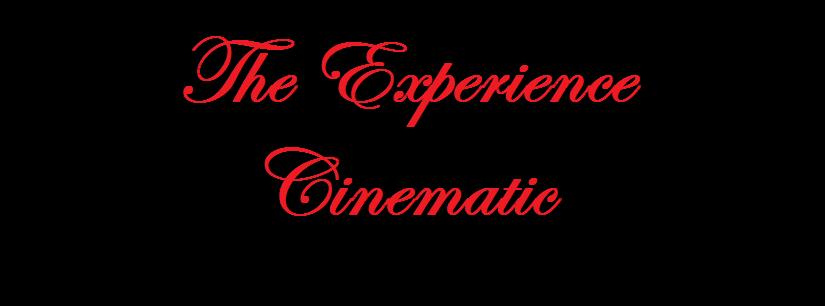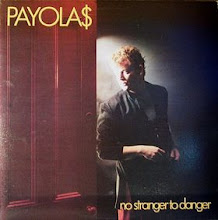Monday, April 12, 2010
Carnival of Souls (Harvey 1962)
A group of young women sit in a vehicle as a car of young men pull up, challenging them to a drag race. The young women in the car are up for the race, save one named Mary Henry (Candace Hilligoss), a passenger who sits miserably silent in the vehicle. The race commences, arriving at a damaged bridge which both groups proceed over, only for the women to be knocked over the bridge and into the river. A search of the river turns up nothing, many onlookers commenting the car will never be found. However, out of nowhere, Mary turns up on land, a mess but alive. A week later, she leaves town for Salt Lake City for a job as a church organist, now in the driver’s seat and soon to suffer horrible visions. And that is just the beginning of the ordeal she is to suffer through.
So begins Herk Harvey’s one and only feature film, Carnival of Souls (1962), a blackly comic horror film which explores patriarchal authority and the marginalization of women just as the second wave of feminism was on the rise. While the set up of the film is simple, and as with many B-films, filled with ghastly images made on the cheap, Carnival of Souls is a highly sophisticated little film, relying not on jump scares but atmosphere, playing with narrative and traditional Hollywood conceptions and constructions of space and time.
The reason I have highlighted the start of the film is that it is the most important scene of the film whilst simultaneously being the least important scene of the film. The dramatic conflict of the film is centered on the seeming disconnect Mary feels towards herself and the world around her, being either unable or unwilling to engage with society as a whole. With the accident placed at the start of the film, and the visions Mary experiences, the reason for Mary’s disconnect would appear t be related to the accident, a point she doesn’t believe and yet is insisted upon by many other authority figures throughout the film, including a medical Doctor.
While it is true that the visions Mary experiences may be related to the accident (I will neither confirm nor deny this being the case), given the way the film is structured and the accident presented, there is no evidence that Mary’s disconnect from the world is caused by accident at all. We are never shown Mary before the accident, nor does she say anything during the whole of the race scene. Mary could very well have been as supposedly cold and distant as she is in the film before the accident as much as after, and given how Harvey presents Mary as framed apart from the other women in the car before the accident, she more than likely was.
Yet the opening accident scene is still vitally important, as it is rich in symbolic meaning as it establishes the thematic and subtextual groundwork for the rest of the film. The race is not a race between youths, but between sexes, as the male and female cars battle it out for control on the bridge. It is no mistake that it is the men who knock the women off the bridge, then afterwards try and marginalize their own role in the accident: it is this scenario which is repeated time and again between Mary and various symbols of patriarchal authority throughout the film, figures who are lampooned while still symbols of a very real systemic horror.
Each male figure in the film attempts to marginalize Mary by laying the blame for her supposed problems at her feet, be it spiritually (the pastor), scientifically (the Doctor) or “romantically” (the sleazy John Linden [Sidney Berger]). Much like the young men at the start of the film who attempt to pass on the blame for the accident, each patriarchal figure reacts with shock to Mary’s refusal to merely listen to them lecture her and play the role that they, and society, dictates, oblivious to their own role in assisting Mary’s suffering.
Even the sphere of the unknown is a site of male dominance, as Mary is haunted not by visions of women, but of well dressed men. It is no surprise then that Mary is at her most terrified when presented with situations in which she is rendered speechless, literally: twice in the film, Mary seemingly becomes invisible to the world, lacking the ability to have the world around her listen to what she has to say. This point is driven home all the more when Mary finally comes face to face with a vision of herself as a seemingly lifeless dance partner of one of the male ghouls which has haunted her throughout the film.
While the film as a whole is highly stylized and over the top, natural given the dark comedy of the film, Candace Hilligoss’ performance as Mary is magnificent, bringing a layer of legitimate psychological depth to a role that could easily have become one note. Mary’s resistance to patriarchy in the film is not an overt political resistance, but one driven by a deeply held, even primal, refusal to accept the world as is, and as such is not fully understood by Mary herself consciously. Hilligoss manages to effectively embody this struggle, with much of her performance hinging upon the subtleties of her facial expressions and physical mannerisms rather than on dialogue. No other performer in the film comes close to Hilligoss’ work, though to be fair, the rest of the cast doesn’t nearly have the level of material to work with.
Herk Harvey’s direction however deserves particular attention, transforming his budgetary limitations into strengths, as he and his crew play with Hollywood concepts of cinematic time and space in order to place the viewer into the mindset of Mary and achieve a distinctive horrific atmosphere. Scenes do not so much begin and end so much as they flow into one another or fragment off from the whole of the film, launching the viewer (and Mary) from one location to another without warning, often utilizing the soundtrack to assist in the disorienting of the viewer as the music often bounces from being diegetic to non-diegetic while the editing blends space and time together in surprising ways. This playfulness leads the viewer to distrust the very foundations of Hollywood cinematic practice, and the end result is often unsettlingly, effectively preventing any sense of any space being safe for Mary, and thus by extension, the viewer. After all, how can one escape patriarchy in a society that favours patriarchy?
Occasionally, the low budget and inexperience of the filmmakers does show. A large number of the supporting cast members are fairly stiff, and while Harvey does his best to make this work, he cannot cover it up entirely. Furthermore, Harvey allows the film to occasionally dip too far into the realm of comedy for its own good, drifting too far into an overt parody of horror films rather than playing the fine line between horror and humour and losing sight of his larger thematic goals.
Still, these are minor quibbles in an otherwise great film, and given that Carnival of Souls is such a rarity, a politically progressive feminist film in a genre that more often than not marginalizes and demonises women, these flaws serve more as a reminder of the restrictions facing the filmmakers, both financial and political. The film can be found for rent off of the Criterion Collection website, and has been made available on DVD both by Criterion and other distributors.
Labels:
1962,
Candace Hilligoss,
Carnival of Souls,
dark comedy,
Herk Harvey,
horror
Subscribe to:
Post Comments (Atom)


No comments:
Post a Comment
What Is Your Cinematic Experience? Post Here!